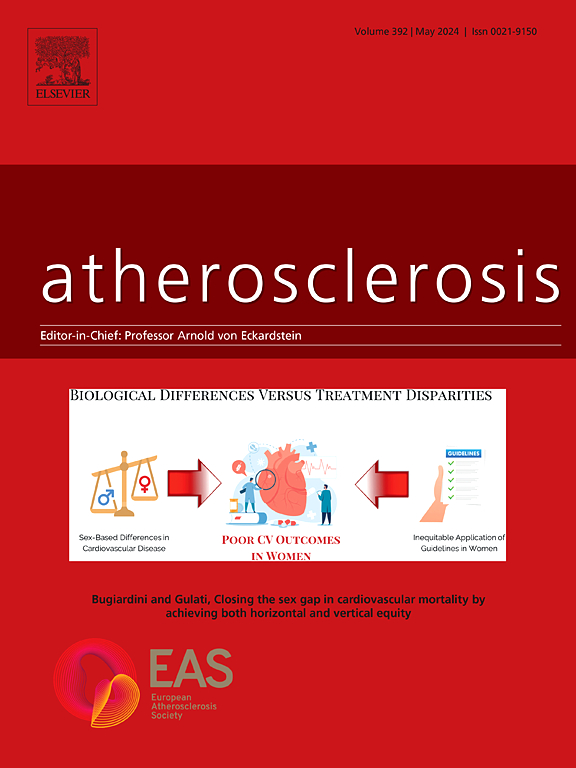Lipid metabolism in women: A review
IF 5.7
2区 医学
Q1 CARDIAC & CARDIOVASCULAR SYSTEMS
引用次数: 0
Abstract
The menopausal transition, defined by the cessation of menstruation due to declining ovarian follicular function, results in a marked decrease in endogenous estrogen levels. This phase is associated with significant metabolic changes and a shift towards a more atherogenic lipid profile. Specifically, there are increases in total cholesterol, low-density lipoprotein cholesterol, and triglycerides and unfavorable alterations in high-density lipoprotein cholesterol and lipoprotein(a) levels. These lipid changes, which contribute to an increased risk of atherosclerotic cardiovascular disease, are influenced by diminished estrogen levels and chronological aging. However, the specific mechanisms driving this increased risk are not fully understood. A thorough understanding of these lipid profile alterations is important for developing strategies to reduce cardiovascular disease risk in women. This review provides an overview of how lipid metabolism is affected during the menopausal transition and the resulting implications for cardiovascular risk.

女性脂质代谢:综述
由于卵巢卵泡功能下降导致月经停止,绝经期过渡导致内源性雌激素水平显著下降。这一阶段与显著的代谢变化和向更致动脉粥样硬化的脂质谱转变有关。具体来说,总胆固醇、低密度脂蛋白胆固醇和甘油三酯增加,高密度脂蛋白胆固醇和脂蛋白(a)水平的不利改变。这些脂质变化会增加动脉粥样硬化性心血管疾病的风险,并受到雌激素水平降低和时间衰老的影响。然而,导致这种风险增加的具体机制尚不完全清楚。彻底了解这些脂质谱变化对于制定降低女性心血管疾病风险的策略非常重要。这篇综述概述了在绝经过渡期脂质代谢是如何受到影响的,以及由此产生的心血管风险的影响。
本文章由计算机程序翻译,如有差异,请以英文原文为准。
求助全文
约1分钟内获得全文
求助全文
来源期刊

Atherosclerosis
医学-外周血管病
CiteScore
9.80
自引率
3.80%
发文量
1269
审稿时长
36 days
期刊介绍:
Atherosclerosis has an open access mirror journal Atherosclerosis: X, sharing the same aims and scope, editorial team, submission system and rigorous peer review.
Atherosclerosis brings together, from all sources, papers concerned with investigation on atherosclerosis, its risk factors and clinical manifestations. Atherosclerosis covers basic and translational, clinical and population research approaches to arterial and vascular biology and disease, as well as their risk factors including: disturbances of lipid and lipoprotein metabolism, diabetes and hypertension, thrombosis, and inflammation. The Editors are interested in original or review papers dealing with the pathogenesis, environmental, genetic and epigenetic basis, diagnosis or treatment of atherosclerosis and related diseases as well as their risk factors.
 求助内容:
求助内容: 应助结果提醒方式:
应助结果提醒方式:


